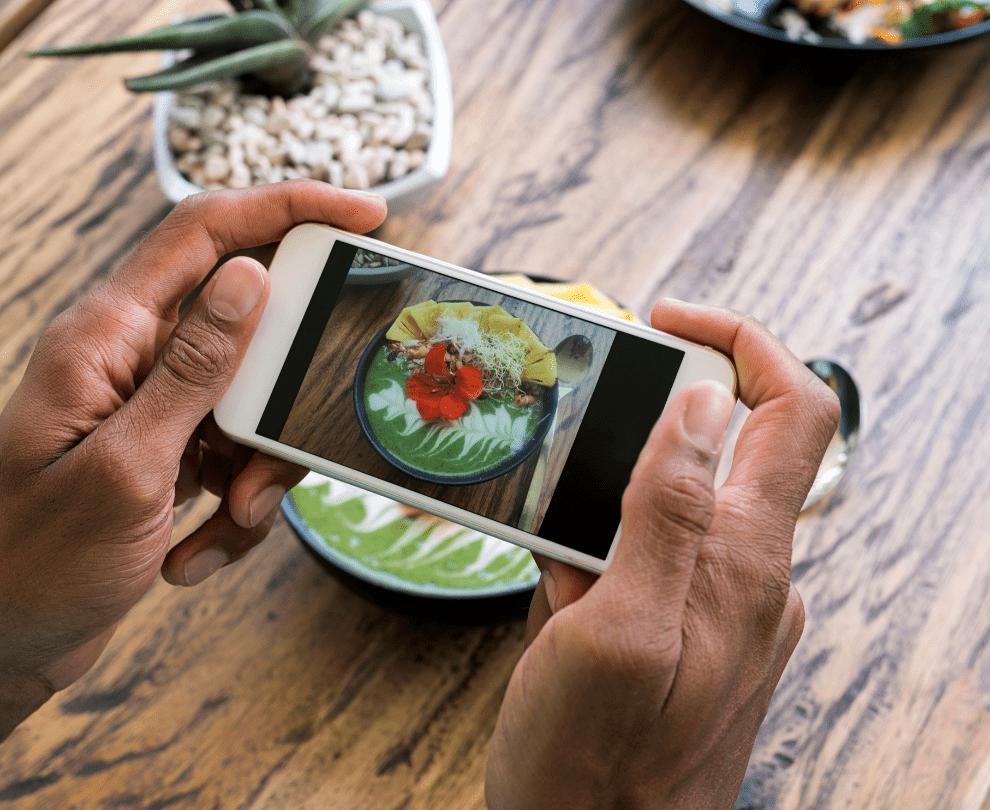Sign up for restaurant insights
Immersive dining is one of the most exciting new trends in the restaurant industry. Restaurant owners are merging food, art, music, and entertainment to create truly unique experiences for customers. The result is more than a meal or a performance — it’s a fully integrated event.
If you want to create a buzz and engage loyal customers, an immersive dining experience can do the trick. The right concept can attract an enthusiastic audience, boost revenue, and build awareness for your brand.
What is immersive dining, and why is it more popular than ever?
Immersive dining combines culinary and theatrical elements to create a multisensory experience. It’s something akin to dinner theater — but instead of being mere observers, the guests (and their meals) are part of the show. This concept has been around for a while; you’ve probably heard of Dining in the Dark, where customers put on blindfolds and eat in a pitch-black room.
Today, restaurants all over the world are developing new ways to transform ordinary meals into once-in-a-lifetime experiences. Journey in New York City uses video projections, special effects, theatrical performances, and special menus to transport diners to a variety of locations — inside a volcano, for example, or deep into outer space. At Hansei in Los Angeles, guests enjoy classic Japanese dishes and drinks while moving to different locations in the Toshizo Watanabe Culinary Center and the beautiful James Irvine Japanese Garden.
These unusual experiences have become popular with diners who are actively seeking out-of-the-box meals. It’s dinner and a show, but on an entirely different level.
Creating an interactive guest experience
You don’t have to be located in Los Angeles, Las Vegas, or Washington, D.C. to jump on the immersive dining trend. With the right strategies, you can develop an experience that delights guests and leaves them wanting more.
Stuck for ideas? Look at reviews for your business and other local competitors to discover the type of dining experience your guests want.
Theme or concept
Every great immersive dining experience starts with a theme or a concept. This can be as specific or as vague as you like. The key is to choose an idea that complements the season or your restaurant’s cuisine. It should also be appropriate for the type of restaurant you run; an immersive fine dining experience in Fort Lauderdale, South Beach, or Santa Monica will probably be different from a jazz event in New Orleans or a murder mystery in a small town in the Midwest.
In general, the more defined the idea, the more immersive the meal. For example, you might host a murder mystery event that’s set at a wedding reception in the 1950s. Customers could be guests at the dinner while the action happens around them; they’ll get wrapped up in the music, dancing, and story as they eat.
Not all immersive experiences have to have an element of fantasy. You could keep it more realistic by hosting a farm-to-table dinner at the farm itself. Guests can dine in the fields that supplied their vegetables while the farmer and chefs explain the meal.
Ambiance and decor
When you’re designing an immersive meal, ambiance is everything. Take your everyday restaurant ambiance and dial it up dramatically in the dining room — guests should feel like they’ve traveled to a different world. Use lighting, video, and decor to create a full-immersion atmosphere. Video projections are especially popular; they’re easy to change, and you can project them on the walls, ceiling, and even the floor.
Some restaurants borrow elements from haunted houses, dividing the space into different areas. At Gingerline’s pop-up Chambers of Flavour in London, guests enjoyed a unique dish in five different rooms, each with a different theme.
Interactive dining elements
Interactive elements set an immersive dining experience apart from dinner theater or a typical themed meal. Guests become part of the action — they might interact with servers in character, participate in activities, or physically move through the space.
Don’t be afraid to get creative as you develop a culinary journey. During the Le Petit Chef experience at the Ritz-Carlton in Los Angeles, a tiny animated chef strolled around each guest’s plate and provided interactive educational sessions before each course.
Technology integration
Many types of immersive dining rely on technology to deliver a completely new culinary experience for guests. At MoonFlower Sagaya Ginza in Japan, guests enjoy meals from all four seasons — and as the courses change, so do the stunning visuals in the digital art installation. Precisely projected flowers unfurl across each person’s plates, and a rushing river flows down the center of the dining table as a seafood course is served.
That level of customization might not be in your budget, but you can invest in smaller-scale technology integrations like:
- Augmented reality. Like the popular Pokémon GO game, these apps add characters or animated elements to your real-world location; guests can interact with them using their smartphones.
- Virtual reality goggles. Enable guests to enter a new, three-dimensional world to play games, explore the menu, or interact with each other.
- Robots. Use delivery robots to transport food, interact with guests, or lead diners to their tables.
If you’re planning a temporary event, consider partnering with a company such as CRAVE 4D, which designs full-color laser projections for immersive dining.
Storytelling
Stories create a framework for an immersive experience; they capture guests’ attention and imaginations, so they’re engaged from the moment they walk through the door. You can integrate storytelling in multiple ways.
- Plot: Create a narrative to introduce the theme and concept of the event. For example, after they buy tickets, you could send an email that sets the scene and creates expectations.
- Cast: Ask servers and performers to contribute to the story through character, movement, and language.
- Narration: Use a narrator — it could be your chef, manager, or even an actor — to weave a story that connects the food to other elements of the experience.
- Food: Your ingredients, hors d’oeuvres, entrées, wine pairings, and cocktails should all support the narrative.
Music or soundscapes
The best immersive dining experiences appeal to all the senses. Sound is one of the best ways to enhance the event; after all, music in restaurants can affect how diners feel. If you’re holding a Roaring ’20s meal, you might play jazz music and flapper-inspired dance tracks from the 1920s. For an experience that takes guests to a faraway galaxy, you could use a soft soundscape.
How partnering with Grubhub can help
Creating an immersive restaurant experience is no small feat. To expand the benefits beyond in-house dining — and boost your return on investment — turn to Grubhub.With the innovative features on the Grubhub platform, you can offer special meals, discounts, and interactive meal kits to all your customers. The marketing resources and promotional tools help you get the word out. When customers order, Grubhub’s top-notch payment processing, food tracking, and professional drivers ensure a smooth experience. To see how this cutting-edge technology integrates with your next immersive dining event, get started with Grubhub today.




